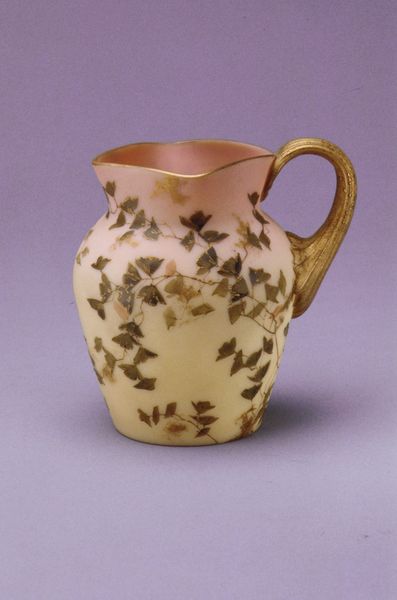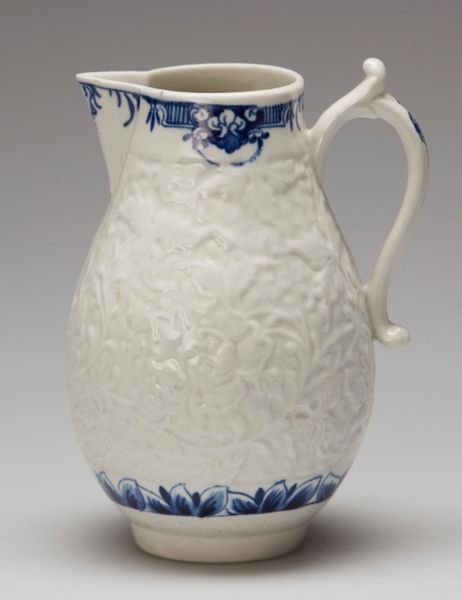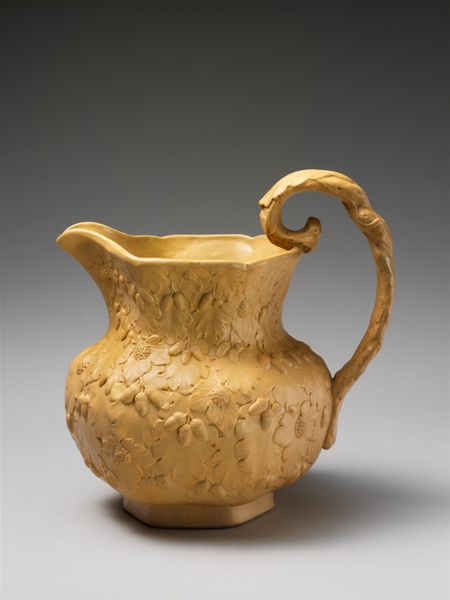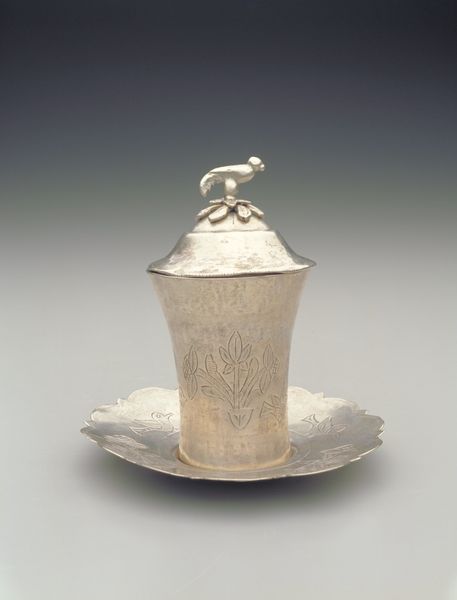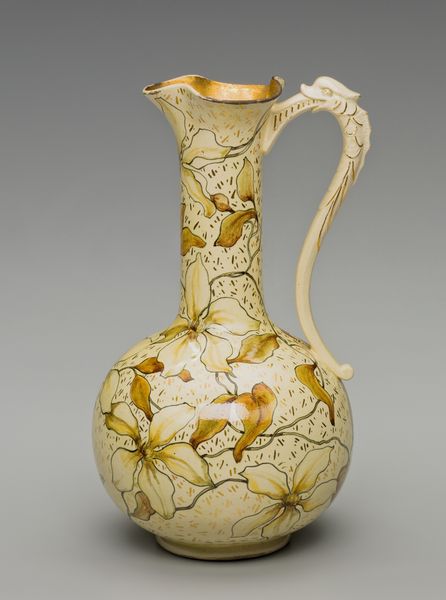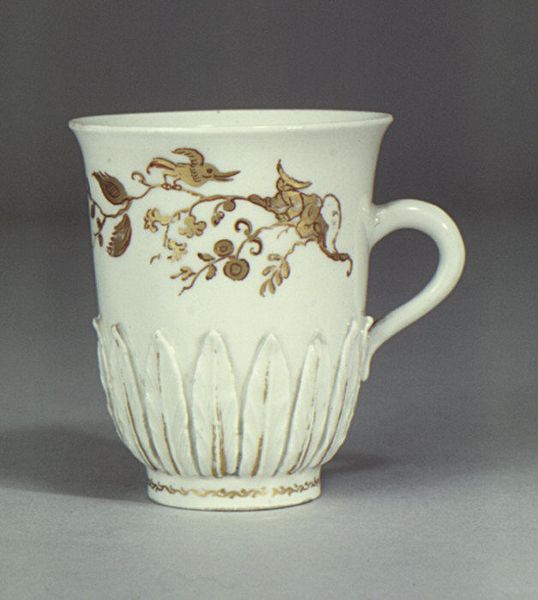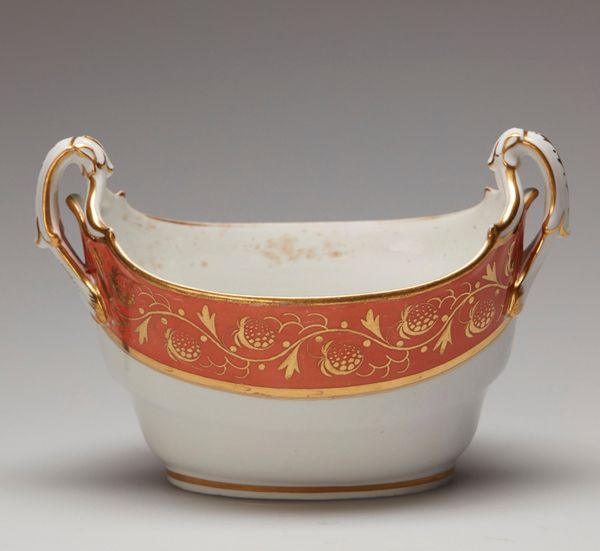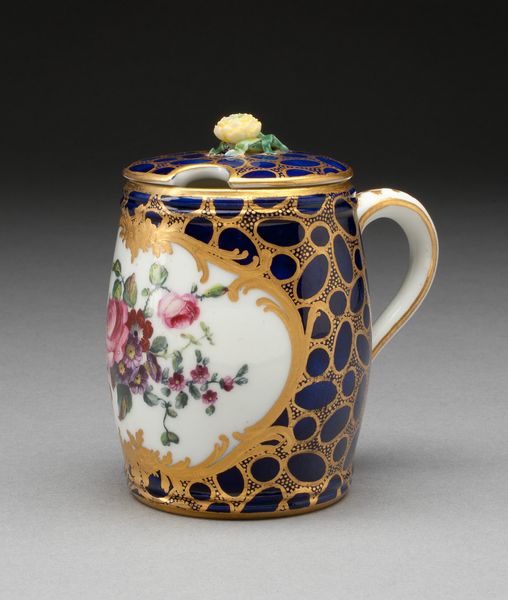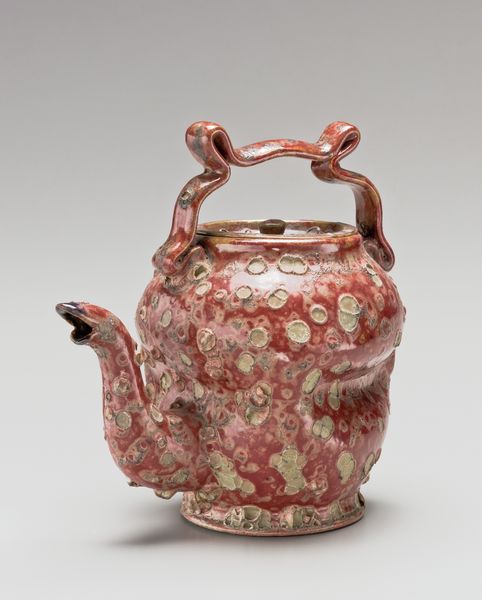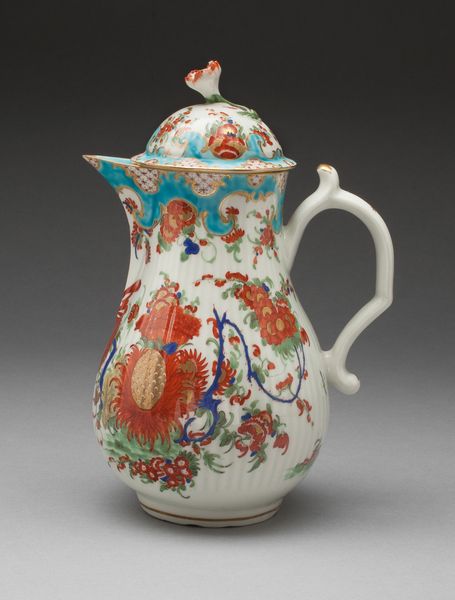
ceramic
#
ceramic
#
ceramic
#
united-states
#
decorative-art
Dimensions: 7 1/2 x 5 1/2 in. (19.1 x 14 cm)
Copyright: Public Domain
Editor: Let's talk about this “Chocolate Pot” crafted between 1886 and 1895 by the New England Pottery Company. It's ceramic, currently residing at the Met. I'm immediately struck by its delicate nature. The colors and floral designs are so ornamental! How might we interpret this piece through a wider lens? Curator: That delicacy is key, especially when viewed in the context of the late 19th century. Chocolate, at that time, had transitioned from an elite luxury to a more accessible indulgence, largely fueled by the labor of exploited workers, primarily in the colonies. Consider, then, how an object like this, meant to elevate the experience of chocolate consumption, obscures the realities of its production. What feelings do the floral motifs evoke, knowing this? Editor: That contrast is powerful. The gold clovers and cream colors feel celebratory and almost innocent. Are we meant to be seduced by its elegance and ignore its complicity in these historical injustices? Curator: Exactly. The decorative arts of this period often served this purpose—to beautify, to distract, even to erase the often-uncomfortable truths of the Gilded Age. The clover, often associated with luck and prosperity, takes on a darker meaning. Does its visual appeal perhaps mask a system built on exploitation? Think of this pot not just as a beautiful object, but as a symbol of the complex relationship between aesthetics, labor, and consumption. Editor: Wow. So looking at the clover motif in connection with the pot’s function makes you think about how prosperity relies on hidden labor? I'll never look at decorative arts the same way. Thank you. Curator: My pleasure. Now, consider how many other everyday objects carry similar untold stories...
Comments
No comments
Be the first to comment and join the conversation on the ultimate creative platform.
